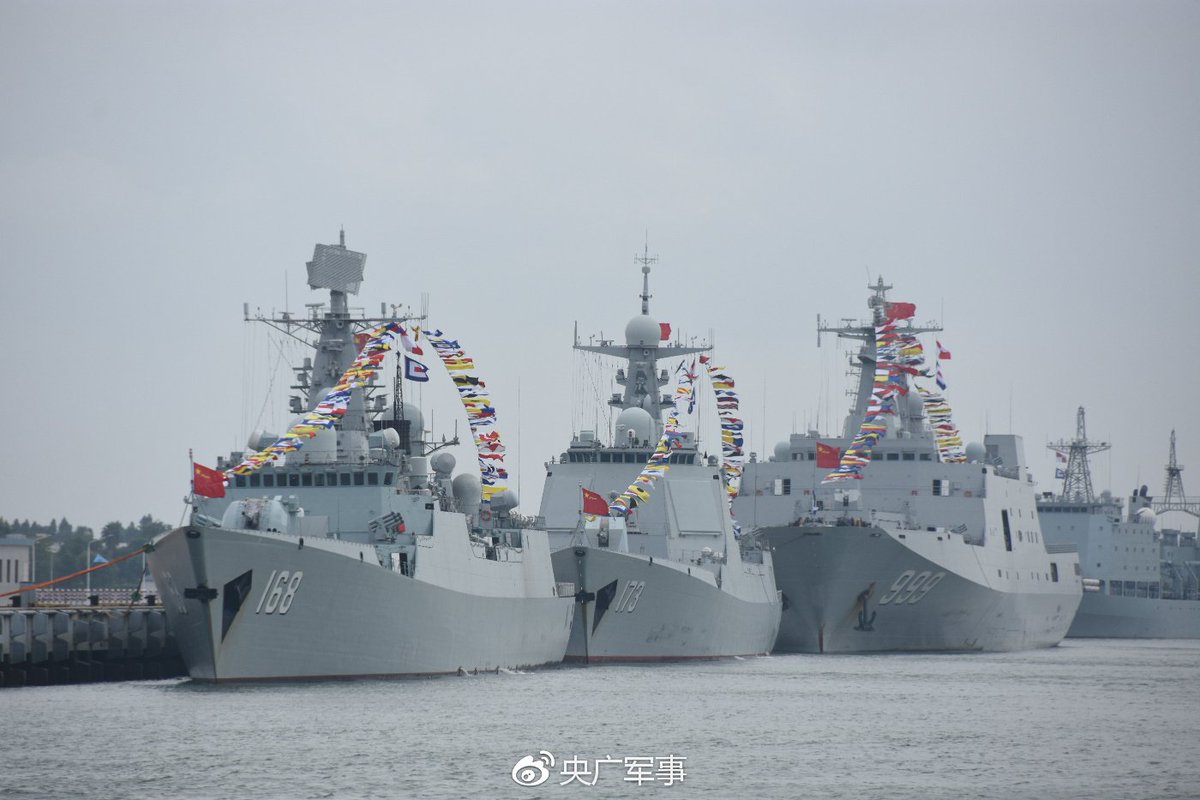The U.S. sailed two guided-missile warships through the
Monday, in what Taipei’s ministry of defense described as a routine passage through international waters.
Officials in Beijing have yet to comment on passage of the American destroyer and cruiser, but in the past the Chinese government has taken a hard line against Navy vessels transiting the waterway separating mainland China from Taiwan.
China claims Taiwan as part of its territory and has vowed to conquer it by force, if necessary.
“USS Curtis Wilbur [DDG 54] and USS Antietam [CG 54] conducted a routine Taiwan Strait transit on Oct 22, in accordance with international law. The ship transit through the Taiwan Strait demonstrates the U.S. commitment to a free and open Indo-Pacific. The U.S. Navy will continue to fly, sail and operate anywhere international law allows,” said
spokesman Cmdr. Nate Christensen in an email to Navy Times.
Part of the Ronald Reagan Carrier Strike Group, the Ticonderoga-class Antietam visited South Korea’s Jeju Island last week, following its maneuvers with Royal Thai Navy vessels in the South China Sea.
Pentagon spokesman Army Col. Rob Manning said it “was certainly not the department’s intent to raise tensions” on Monday, adding that were was “coordination and contact with the appropriate nations” for the transit.
He would not specify which nations were contacted.
Although lawful, the transit of American warships through the strait remains a significant statement in support of freedom of navigation for all nations, not only near Taiwan but also in other contested areas of the Western Pacific such as the South China Sea.
From July 7 - 8, the Japan-based destroyers Mustin and Benfold transited the Taiwan Strait, too.
However, the latest transit of the Strait comes amid rising tensions between Taipei and Beijing.
Taiwan officials wasted no time in
that the American warships was sailing near the southern tip of the island, which broke apart from the mainland following the 1949 civil war.
The Navy research vessel Thomas G. Thompson arrived last Monday in the southern Taiwan port of Kaohsiung to refuel and swap out crew members, a visit China considered provocative.
On Wednesday, Beijing’s Foreign Ministry spokesman Lu Kang said that China had expressed "our solemn concerns to the U.S. side” over the visit.
Beijing remains at loggerheads with Taiwanese president Tsai Ing-wen, who during an Oct. 10 National Day address warned China to stop being a “source of conflict” in the region.
Her words came a day after Taiwanese forces conducted war games on the northern part of the island.
China cut off contact with Tsai’s government shortly after her 2016 inauguration and has turned up diplomatic, economic and military pressure to isolate Taiwan globally.
Monday’s movement through the strait also came only three weeks after a Sept. 30 freedom of navigation operation in the South China Sea.
The crew of the destroyer Decatur reported that they were
a Chinese Luyan-class warship when they sailed near Gaven Reef. The Chinese vessel came within 45 yards of the Decatur’s bow before the American warship veered off to prevent a collision, officials said.
Although occupied by fortified Chinese troops, the twin reefs are claimed also by Vietnam, Taiwan and the Philippines.
In an
in the Global Times, a tabloid aligned closely with the Chinese Communist Party, Chen Xiangmiao — a researcher at the National Institute for South China Sea Studies — defended Beijing’s “needs to safeguard territorial sovereignty and maritime jurisdiction in the area and ensure secure corridors for energy import and freight transport" against the actions of “aggressive” U.S.
“Judging by the current circumstances, China has no other choice than taking countermeasures, including increasing military deployment in the region," he wrote.
U.S. Defense Secretary Jim Mattis was supposed to visit China earlier this month, but the trip was cancelled over Beijing’s quibbles about these incidents and an escalating trade war spurred by American tariffs on Chinese goods.

